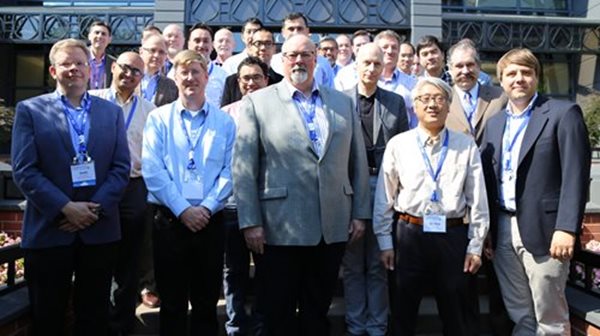Day 2: Materials for Optomechanical Actuation Incubator
Day 2: Materials for Optomechanical Actuation Incubator
Michael Forkner, OSA & SPS
OSA’s Materials for Optomechanical Actuation Incubator brought together researchers from with varying backgrounds to discuss the applications and challenges behind implementing optomechanical actuators. On day two the speakers and hosts pulled together the different perspectives presented on day to and focused on some of the high-level problems facing the optomechanical community.
Dr. Timothy White from the US Air Force Research Laboratory stated that the community as a whole has moved on from a simple ‘it moves!’ standpoint, and now are trying to figure out what the next stage is. Dr. White believes that stage is defined by what the applications are, and poses the question “How does the sum of knowledge in this room lead us to this next stage?”
Host Dr. Peter Morrison of the US Office of Naval Research closed out the presentations by discussing the kinds of applications that would affect the naval aviation community. Dr. Morrison talked mainly about the challenges facing naval aviation due to harsh environments. Ensuring proper maintenance and reliable operation of electrical systems that are exposed to seawater and extreme conditions is extremely costly. Replacing electrical wiring with optical components would not only decrease the large cost of maintenance and corrosion prevention, it would also cut down on weight. Around 20% of an aircraft’s weight is radiofrequency suppression, and one of the benefits mentioned on Day 1 of the Incubator is that light does not interact with itself (and is not affected by radiofrequencies). Dr. Morrison believes that “flight by light” is a realizable goal, and will have a real impact on aviation technologies.
After the talks concluded, the Incubator attendees continued the discussion from Day 1 concerning how to narrow down the relevant Figures of Merit. The consensus was that there was no one quantity that could encapsulate all the relevant information for every area of research in this topic. When asked what should be the standard Figure of Merit at dinner on the first day, Dr. Jacob Khurgin replied, “Honesty – but really it depends on the type of work.” The different metrics used, from the macro scale, which looks at energy input to work output, to the micro scale, which looks at the efficiency of light harvesting, make it impossible to have one overarching Figure of Merit. During discussions the group decided the best recommendation was to split the technology into two categories – optical modulators and displacers – and said that it was a task for the researchers in those respective areas to standardize their measurements.
This Incubator, like all the other Incubators, was unique in the benefits it brought to the attending community. For this optomechanical actuator community, it allowed for the acknowledgement of all the areas of study, from macro- to micro-scales. It was an extremely important opportunity to look beyond each researcher’s technically focused work and to unite in a common goal. I believe that the optomechanical community will go from this meeting and attack their research with new understanding and vigor. The hosts intend to continue the dialog started here so stay keep an eye out for more from this community.
Host Peter Morrison, US Office of Naval Research.

Attendees from the Materials for Optomechanical Actuation Incubator.

